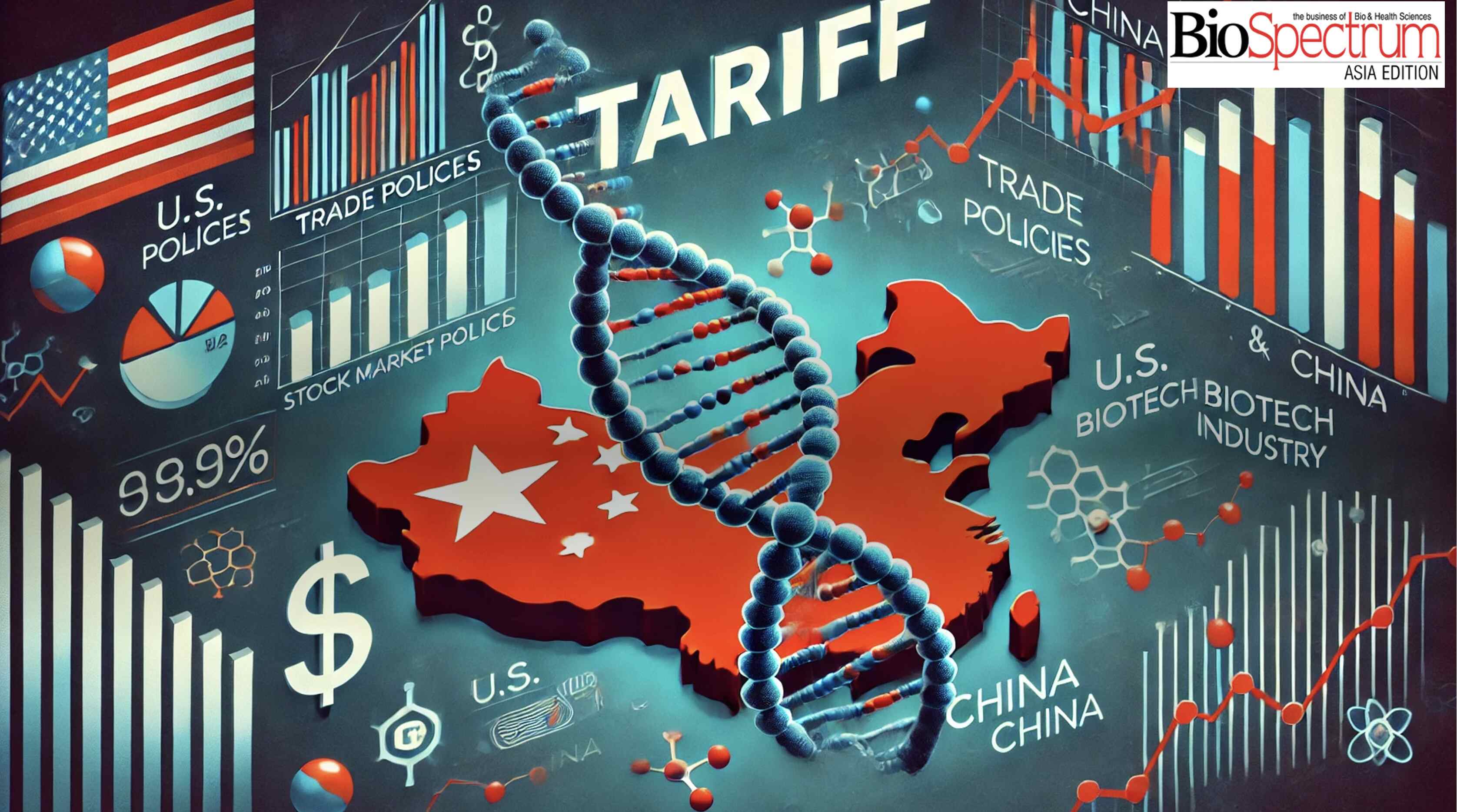
With Donald Trump’s return to the White House, the U.S.-China trade relationship is once again in the spotlight. The tariff disputes, first ignited during Trump’s previous term, have placed significant strain on China’s burgeoning biotech and biopharma sectors. Known for his aggressive trade policies and push for reshoring pharmaceutical manufacturing, Trump’s renewed tenure signals a continuation, if not an escalation, of these strategies.
China, home to biotech giants like BeiGene, WuXi AppTec, and Innovent Biologics, has positioned itself as a leader in oncology, gene editing, and advanced therapeutics. However, the new wave of heightened tariffs and tighter restrictions on technology transfers presents a significant challenge. This article explores the impacts of Trump’s policies, shares expert insights, and examines strategic adaptations for a resilient future in China’s biotech landscape.
The Tariff Impact: Unpacking the Disruptions
Trump’s trade war with China, marked by tariffs on $370 billion worth of Chinese goods, has deeply affected the biotech and pharmaceutical industries. These policies have resulted in profound supply chain disruptions, reshaped industry strategies, and forced companies to reconsider their global manufacturing footprints.
Rising Costs for APIs and Raw Materials:
China remains the largest global supplier of active pharmaceutical ingredients (APIs), accounting for over 40% of the U.S.’s API imports. During the Trump administration, tariffs imposed on Chinese-made APIs led to a 20–25% increase in raw material costs across the biopharma supply chain. This escalation contributed to higher drug manufacturing costs, ultimately pushing up prices for essential medications in the U.S., including generics and biosimilars.
Historical Context: In 2019, the tariffs impacted nearly 70% of the U.S. drug supply chain. Smaller biotech firms, already operating on tight margins, were particularly vulnerable—many had to either absorb the financial burden or pass on the increased costs to consumers. Industry reports and commentary at the time suggested that prices of commonly used antibiotics and oncology drugs rose by an estimated 15–30%, although this figure does not appear in an official U.S. International Trade Commission (USITC) report.
Industry Response: In response, many U.S. biotech companies began diversifying their sourcing strategies, turning to suppliers in India and Southeast Asia. However, the shift has not been seamless—challenges related to quality control and supply chain stability continue to underscore the sector’s deep reliance on Chinese manufacturers.
Disruption of Research and Development (R&D): The tariffs extended beyond finished pharmaceutical products to include advanced lab equipment, reagents, and specialized research tools, complicating access for China’s biotech firms. The resulting cost increases and delays in obtaining high-quality U.S. research equipment have significantly slowed down R&D projects, particularly in areas requiring sophisticated technology, such as gene therapy, CRISPR-based innovations, and mRNA research.
Technology Transfer Restrictions: Beyond tariffs, Trump’s administration implemented stringent controls on technology transfers, particularly targeting critical biopharma technologies. These measures restricted China’s access to key innovations in drug development, manufacturing processes, and advanced diagnostics, stifling collaborative projects between U.S. and Chinese firms.
Expert Insights: Navigating the Renewed Trade Storm
Dr. Liu Feng, China Biopharma Alliance:
"The renewed tariffs present a dual challenge: increased production costs and restricted access to advanced U.S. technologies. This is prompting Chinese firms to accelerate their domestic R&D initiatives, invest in local manufacturing, and pursue strategic alliances within Asia to create a robust, regional supply network."
Dr. Sarah Thompson, U.S. Biotech Association:
"The tariffs have exacerbated existing supply chain vulnerabilities in the U.S. biotech sector, especially for companies heavily reliant on Chinese APIs. While there is an increasing push for domestic sourcing, the immediate transition is proving costly. We are seeing a growing interest in diversifying suppliers, with firms looking towards India and Southeast Asia as potential alternatives."
Dr. Li Wei, Chinese Biotech Firm:
"In response to the tariffs, we’re accelerating our self-reliance initiatives. Investing in local R&D and manufacturing is now more critical than ever for sustaining growth."
Dr. Michael Chen, Biopharma Consultant:
"Regional collaborations within Asia are gaining momentum as a countermeasure to U.S. tariffs. This shift could lead to a more interconnected and resilient biotech ecosystem in the East."
Dr. Elaine Wong, Greater China Bio-Association:
"China’s swift response to these tariffs includes ramping up domestic production of APIs and fostering innovation. This is an opportunity to strengthen our local ecosystem, decrease dependency on U.S. imports, and expand into new markets in Europe and Southeast Asia."
Dr. Michael O’Brien, American Chamber of Commerce in China:
"The trade tensions are creating a complex environment for U.S. companies operating in China. While some firms are reconsidering their investments, many are doubling down on collaborative ventures with Chinese biopharma firms to maintain market access and mitigate tariff impacts."
BeiGene:
"The current trade landscape has certainly posed challenges, but it has also accelerated our focus on innovation and localization. We are expanding our R&D capabilities within China and strengthening partnerships across Asia to ensure a resilient and self-sufficient pipeline." — BeiGene spokesperson
WuXi AppTec:
"While the tariffs have introduced complexities, they have also driven us to enhance our regional supply chains and deepen our collaborations within Asia. We view this as a transformative period to build a more integrated and innovative biotech ecosystem in the region." — WuXi AppTec spokesperson
Innovent Biologics:
"Navigating the trade tensions requires agility and strategic foresight. Innovent has been proactive in scaling our domestic manufacturing and exploring new market opportunities outside of the U.S. This is a pivotal moment for us to showcase the strength and independence of China’s biotech capabilities." — Innovent Biologics spokesperson
Strategic Response: China’s Adaptation to the Tariff Landscape
China’s biotech industry has proactively adjusted its strategy in response to escalating tariffs, focusing on self-reliance, innovation, and regional collaboration.
U.S. Perspective: Balancing Protectionism and Industry Needs
From the U.S. side, Trump’s strategy aims to reduce dependency on Chinese imports and boost domestic manufacturing. However, the transition to domestic sources is costly and complex, given the U.S. biotech sector’s heavy reliance on Chinese APIs and raw materials.
Industry Insights:
Future Outlook: A Transformative Period for U.S.-China Biotech Trade Relations
The path forward will be shaped by strategic adaptations, increased regional collaborations, and a focus on building resilient supply chains.
Surviving Trump’s Tariff Tempest: China’s Biotech Is More Than Ready to Flip the Script
Trump’s tariff policies have undeniably created a challenging landscape for China’s biotech sector. However, instead of succumbing to the pressure, China’s industry leaders have embraced the disruption as a catalyst for unprecedented growth, innovation, and strategic evolution. By doubling down on self-reliance, forging robust regional alliances, and diversifying their global market approaches, China’s biotech firms are not merely adapting — they are rewriting the rules of the game and positioning themselves to lead the next chapter of global biotech advancements.
The path forward will not be without hurdles, but the emphasis on resilience, strategic foresight, and turning challenges into opportunities is already reshaping the industry’s trajectory. In this rapidly shifting geopolitical environment, China’s biotech sector is proving that it is not just weathering the storm — it is harnessing the winds of change to sail towards a new era of leadership and dominance on the global stage.
The final act in this trade drama remains unwritten, but one thing is certain: China’s biotech players are stepping onto the global stage not as mere survivors, but as innovators and leaders, ready to redefine the future of the industry.
References:




